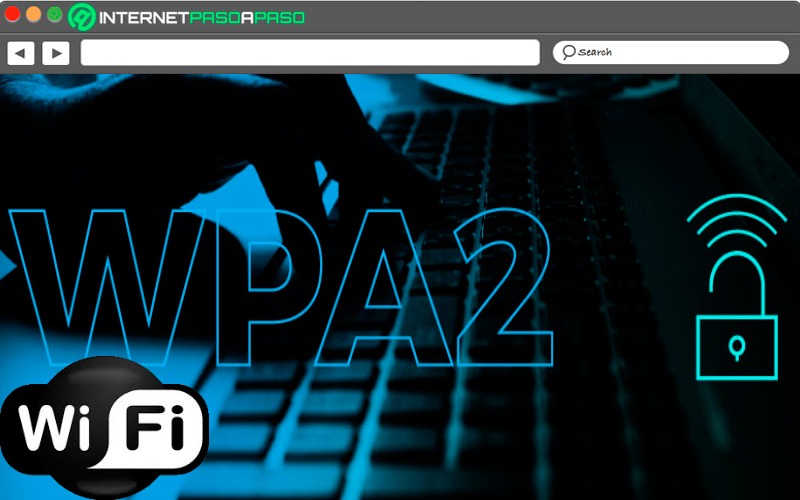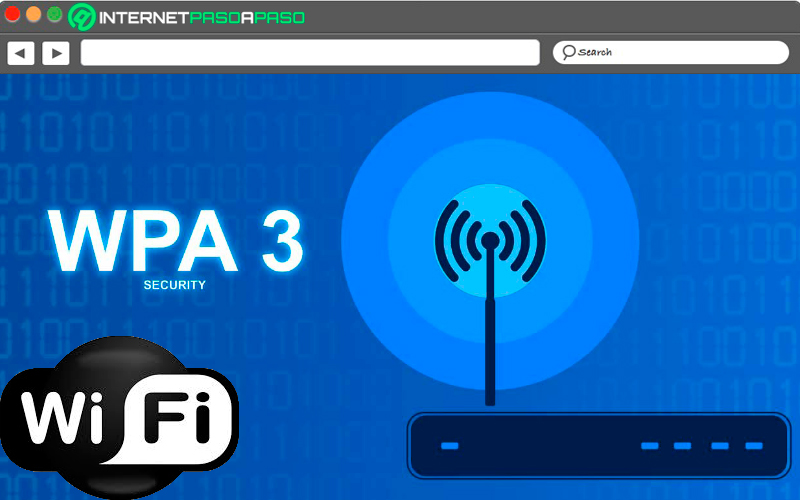
Index:
UPDATED ✅ WPA is a protection protocol for wireless networks, which guarantees greater security of the same ⭐ ENTER HERE ⭐ and Learn more about the subject
Since the 1990s Wi-Fi security protocols have undergone many changes, this with the aim of making them much more effective and safe. That is why we currently find different types of security protocols responsible for protecting each home wireless networks.
This is how during all this time they have been created WEP, WPA, WPA2 and WPA3 networks, where each one of them fulfills the same objective, but at the same time differs from one another. And this is how they are responsible for keeping away the unwanted parts that connect to the network and also take care of encrypt private data that are sent through radio waves.
Therefore, here we are going to explain a little more about what each of them is about and what they are. The main differences that exists between each of them.
How many types of passwords and encryption can a WiFi network have and what are they used for?
These are the wireless network security protocols what is currently: WEP, WPA, WPA2 and WPA3, where each of them performs a similar function, but with certain differences from one another. All of them have been created mainly because Wi-Fi networks does not have the same security of wired networks.
As usual, wireless networks transmit data within its range to each of the addresses that are connected to it, which makes it much more more exposed than a wired network where they only transmit the data from a point A to point B.
With this in mind, here we explain each of these protocols:
WEP

known as Wired Equivalent Privacywhich has been developed primarily for wireless networks and approved as a safety standard for Wi-Fi networks. This is how this tool was launched on the market with the aim of offering the same security as wired networks.
But unfortunately this was not the case and a lot of problems of security in WEPsince this one was very easy to break, but hard to set up.
Until now, WEP it remains a very vulnerable alternative for this type of network. Therefore, those systems that depend solely on this protocol constantly have to be being upgraded or replaced with the aim of power keep your wireless system safe. Due to all these problems, WEP ended up being abandoned in 2004 by the WiFi Alliance.
WPA

It is also named as Wifi Protected Access. The same was used as a temporary improvement for what was the WEP protocoltaking into account that they presented a great amount of faults and problems. It was like that one day before WEP was officially abandoned by the Wi-Fi AllianceWPA was adopted to begin carrying out protection of this type of networks.
It was like that thanks to WPA started to get one improvement in protection of the system where most of the applications modern WPA used a pre-shared key (PSK), also known as Personal WPAjust like him Temporary Key Integrity Protocol or TKIP for data encryption.
Thanks to all this, WPA became a major improvement for what was WEP. However, with the passage of time and when it was put to the test and in public demonstrations, WPA has also started to show itself quite vulnerable to intrusion.
This is how it was possible to detect that the attacks that most affected the protocol were not those that were made directly to him, but those that were made in secure Wi-Fi (WPS) settings, which is a system developed to simplify linking equipment to modern access points.
WPA2

WPA2 or WiFi Protected Access version 2which became the improvement of WPA, taking into account that this protocol had also presented vulnerability to attacks.
This is how this new protocol had a very significant characteristic and which became the most important improvement, and that is that it had the use of the Advanced Encryption Standard (AES), which is a completely safe and legal system for what it is the encryption of information classified as secret.
However, just like previous versions also began to present vulnerability, but this time it was when the attacker already had access to a secure wireless network where could access multiple areas to perform the attacks on different devices connected to the network.
In the case of the vulnerabilities presented WPA2 mainly affect enterprise level networksand not directly to the networks domestic smaller. Despite all this, today the attacks through the configuration of WPS secure Wi-Fi continues to have a very high average, where it currently affects WPA and WPA2 protocols.
WPA3

Finally we meet WPA3, this being the most up-to-date and recent WiFi security protocol. However, today most wireless connections and routers continue to use WPA2and despite having some vulnerabilities, it is still sure.
But, this latest version released on the market also known as Wi-Fi Protected Access (WPA3), seems to have all the necessary tools to be able to provide a modern security at wireless networks.
Among the main tools that it has included in its system we find what it is brute force protectionwhere WPA3 will be responsible for protecting each of the passwords of your users no matter how weak they are, offers a public network privacyit has improved the Internet of Things and offers much stronger 192-bit encryption.
Until now, WPA3 has not reached the entire router marketbut it is expected that end of 2019 and beginning of 2020 this protocol begins to tread strongly on the market of Wi-Fi networks. Where the manufacturers of the same have to take care of create versions that are compatible with devices that have the older versions. This is a process that can take years to complete.
WPA vs WEP. How are they different and which is more secure?
When we talk about WEP and WPA we refer to what were the first two WiFi security protocol versionswhere WPA had to eventually replace WEP because he presented a great vulnerability to attacks, which makes this second WPA version be much safer.
In the case of WEP was used very infrequently because it showed great insecurity rate since it could be violated very easily. He himself provided a encryption level 2 based on the algorithm RC4 encryption, commonly used by 64-bit and 128-bit keys. Therefore, this protocol was not really the best.
While WPA as opposed to WEP use what is a initialization vector 48bit, as well as one 128-bit encryption key. In addition, it stands out for using what is the TKIPconsidering that the first version uses the same key to encrypt all the packets that are transported over the network.
Therefore, WPA with TKIP change all encryption keys each time one of the packets is transmittedproviding a variation in them that prevents the router can be accessed by third parties easily.
What are the differences between WPA, WPA2 and WP3?

Currently there are three protocols called WPA, although the latter has not yet been fully established in the market, but it is expected to be in the market soon. the routers. According to this, here we present the main differences between each of these versions.
In the case of WPA it is much more vulnerable than the next two versions released on the market. Where despite having very strong encryption using WPA-PSK 256-bitstill presents a series of vulnerabilities that it inherited from the first WEP version. Due to these faults it was necessary to cmake a second version which would be its replacement in order to offer greater protection.
It was like that WPA2 became the replacement for WPA in 2006.which presented a large number of updates with respect to the previous version with the aim of improving what it was security and encryption where the AES stood out mainly.
That was how he also introduced what was counter cipher mode with block message authentication code protocolwhich would allow replace the vulnerable TKIP. However, this version also began to show some vulnerabilities that led to the creation of a third version that has not yet been fully released to the market.
So it’s finally released what it is the version of WPA3known as the WiFi Alliance strikes backwhich offers greater security than that offered by previous versions, this is how it will offer fully updated tools offering a more advanced encryption to each of the users.
This protocol will require that all connections make use of the PMF or Protected Managemethis being a factor that raises privacy protections with additional protection mechanismsideal to protect any type of information or data.
Why should my WiFi network always have WPA2 or WP3? Benefits
Taking into account everything mentioned above, we can see that the WPA2 protocol is currently the safest and most reliablewhere even though it has a bit of vulnerability it is still capable of offering an excellent Wi-Fi network protection.
Therefore, it is best to use the WPA2 and do not use WEP or WPA, since both have a increased vulnerability and you will be more prone to suffer damage or inconvenience.
As currently the WPA3 is not yet available in its entirety, you can still use the previous version. However, it is best to use this last version in order to ensure a greater protection at all timestaking into account that the latter has advanced tools and updated capable of withstand a lot of attacks.
Bearing this in mind, Here we give you the main benefits of using one of these two protocols in your WiFi network:
- you avoid having weak access networks to your system.
- The WPA2 Despite being vulnerable, it has a very strong protection system that will help you to have greater protection in your private data.
- You could have data on open networks more protected.
- They offer you greater ease when device configuration.
- In the case of WPA3 offers you one longer key length.
Internet